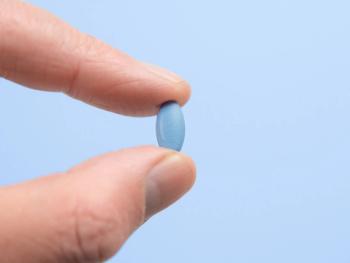
Coping with Diagnostic Uncertainty in Mixed States: Comparing Treatment Risks
Key Takeaways
- Marissa's symptoms suggest mixed depression or depression with PTSD, complicating diagnosis and treatment decisions.
- Antidepressants and lamotrigine are considered, with lamotrigine offering better tolerability but less obvious applicability.
Let’s compare treatment risks when managing mixed states.
“Marissa” has a history of trauma and
The
Suppose Marissa, who is 28 years old, has a cousin with possible bipolar disorder, had her first episode of depression at age 20 and 2 episodes since, one of which occurred shortly after the birth of her 2-year-old daughter. Sertraline made her insomnia much worse, so she stopped it. These features raise the probability of bipolarity, but only weakly vs (for example) a strong family history, earlier age of onset, more frequent episodes, and a more adverse response to sertraline. The diagnostic question remains: mixed depression or depression with
After patient education (discussed in Part 2), Marissa understands this differential and prefers a medication approach over psychotherapy (even after digital options are presented). A direct comparison of treatment approaches is warranted.
Antidepressants or Lamotrigine?
Antidepressants are an obvious option for Marissa. They have modest benefits in both depression2 and PTSD.3 Lamotrigine is not so obvious. Here’s the logic.
Treatment guidelines for mixed states4 are based primarily on efficacy in short-term RCTs funded by pharmaceutical companies in their pursuit of US Food and Drug Administration approval. Older medications are less studied. No randomized trials have been conducted for broadly defined mixed states (see Part 1).
Tolerability (adverse effects and long-term risks) frequently determines patients’ choice, rather than highest efficacy, particularly if symptoms are chronic not acute. Lamotrigine has the best tolerability amongst the mood stabilizers with antidepressant effects. (Lurasidone lacks decades of use to fully understand its long-term risks; likewise for lumateperone, cariprazine, and iloperidone. Quetiapine can cause insulin resistance, which appears to contribute to treatment resistance.5 Even low doses of lithium can cause hypothyroidism.6)
Extrapolating Treatment Options
As shown in the
Many practitioners are hesitant to consider lamotrigine unless a history of hypomania or mania is obtained. Indeed, while it makes sense to consider antidepressants for depression comorbid with PTSD or generalized anxiety disorder; there is no obvious reason to consider lamotrigine for these conditions—except when a depressive mixed state is equally likely the correct diagnosis.
Marissa has surely heard of antidepressants. The patient education discussed in Part 2 will help her understand why lamotrigine is also an option. Now, compare their risks.
Comparing Major Risks
The efficacy of antidepressants vs lamotrigine in broadly defined mixed states has not been studied. But two tolerability concerns are well known: antidepressant withdrawal and lamotrigine allergy. Understanding these risks may have a strong impact on treatment choice when diagnosis is uncertain.
Patients often weigh these risks very differently. For some, hearing the risk of Stevens-Johnson Syndrome (SJS) precludes any further consideration, regardless of how one explains its incidence. For others who may have known someone who struggled to discontinue their antidepressant, concerns about withdrawal might strongly affect their treatment choice.
Incidence of Severe Antidepressant Withdrawal
Different sources estimate very different rates of severe withdrawal. In one podcast interview, academic psychiatrist Michael Thase suggested an incidence of 1% to 2%.7 Other authors, including those of a review of data published through 2022,8 believe the rate is much higher, at least 10% (Mark Horowitz, personal communication). That review notes important effects of dose, duration of treatment, and differences between antidepressants. Obviously, the definition of “severe” also affects rates.
A 2024 review of 79 studies found a 3% rate of severe withdrawal (higher for venlafaxine, desvenlafaxine and escitalopram).9 Lastly, a post-hoc analysis of a recent randomized trial of antidepressant discontinuation found a rate of significant withdrawal of 16% (4 or more emergent symptoms, but not necessarily “severe”; see Response to a Comment by Horowitz).10
Withdrawal vs Stevens-Johnson Syndrome
Comparing antidepressant withdrawal and extreme allergic reactions to lamotrigine is obviously like comparing apples and oranges. Nevertheless, for a very rough impression of relative risk, comparing their rates may be useful. Consider first their lowest respective estimates: 1% for withdrawal; a 0.05% incidence of SJS11; and a 0.05% incidence of death among patients with SJS.12 Using these figures, the rate of severe antidepressant withdrawal is 20 times that of SJS and 400 times the SJS death rate.
Or consider the highest respective estimates: 10% for severe withdrawal, and 1% for SJS (inaccurate, but oft cited on internet sites). Using these figures, severe withdrawal is 100 times more common than SJS and 500 times the SJS death rate. Severe withdrawal has been associated with suicidal ideation, but not death by suicide.13 On the other hand, very severe withdrawal can be life-limiting for months to years, as attested by thousands of online accounts.14
Marissa has yet to make her decision between these 2 options. You will have to be prepared to assist her.
Concluding Thoughts
When patients present with depression and “The 4 A’s” (anxiety, anger, agitation, and/or attention problems), differential diagnosis is challenging. Clinicians should maintain an open mind regarding alternative explanations until good outcomes are obtained. Four means of coping with the resultant diagnostic uncertainty have been presented in this 3-part series.
Dr Phelps is retiring from 30 years of treating complex mood disorders, and recently founded another website, DepressionEducation.org. He is the bipolar disorder section editor for Psychiatric Times® and the author of
References
1. Stahl SM, Morrissette DA, Faedda G, et al.
2. Cipriani A, Furukawa TA, Salanti G, et al.
3. Guidetti C, Feeney A, Hock RS, et al.
4. Natale A, Mineo L, Fusar-Poli L, et al.
5. Calkin CV, Chengappa KR, Cairns K, et al.
6. Phelps J, Coskey OP.
7. Thase M. Webinar, Psychopharmacology Institute. Response to Listener Question. May 7, 2020.
8. Horowitz MA, Framer A, Hengartner MP, et al.
9. Henssler J, Schmidt Y, Schmidt U, et al.
10. Kendrick T, Stuart B, Bowers H, et al.
11. Bloom R, Amber KT.
12. Hsu DY, Brieva J, Silverberg NB, Silverberg JI.
13. Kostic M, Plöder M, Hengartner M, Buzejic J.
14. Surviving Antidepressants. Accessed November 7, 2024.
Newsletter
Receive trusted psychiatric news, expert analysis, and clinical insights — subscribe today to support your practice and your patients.














